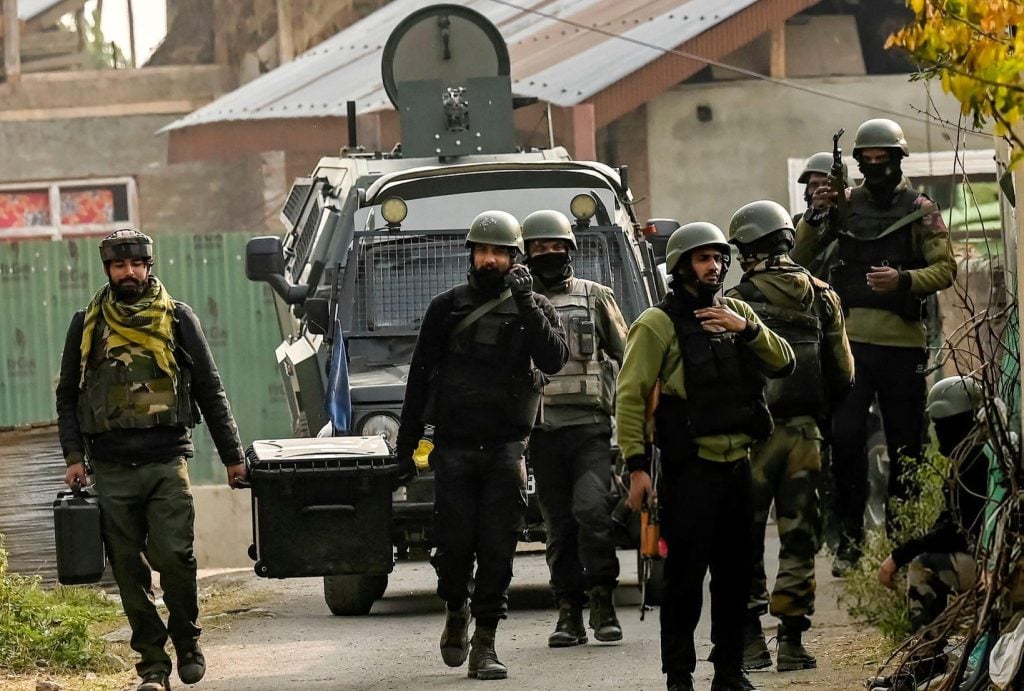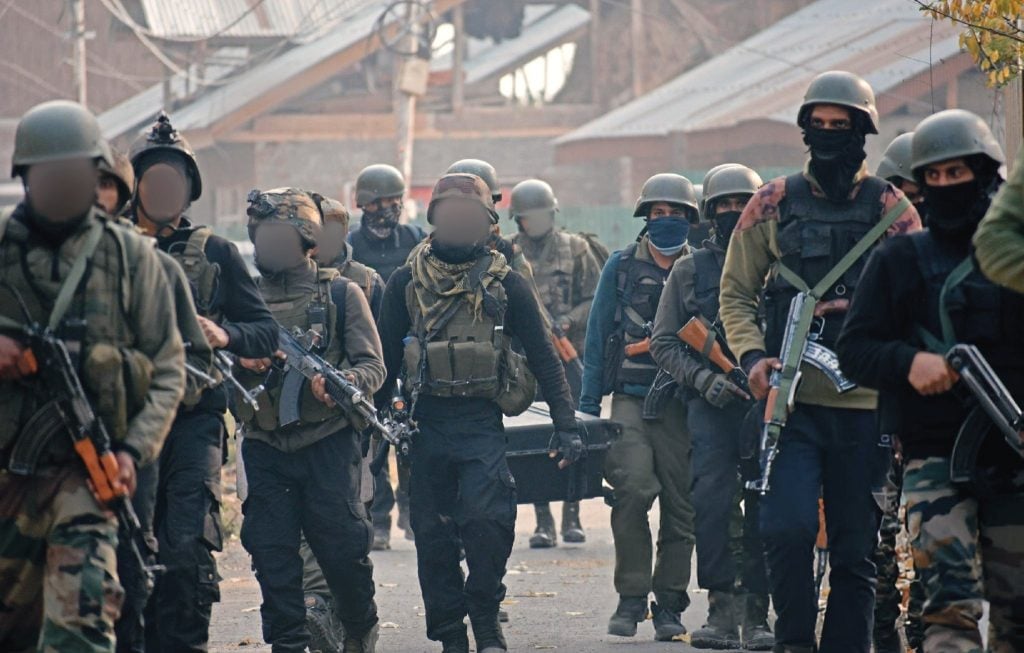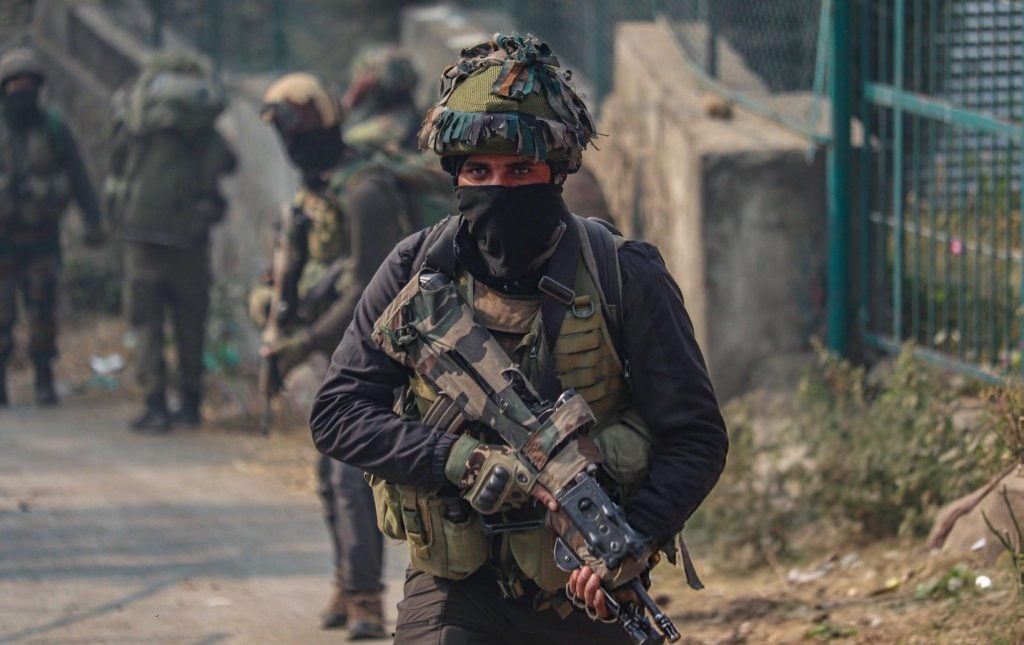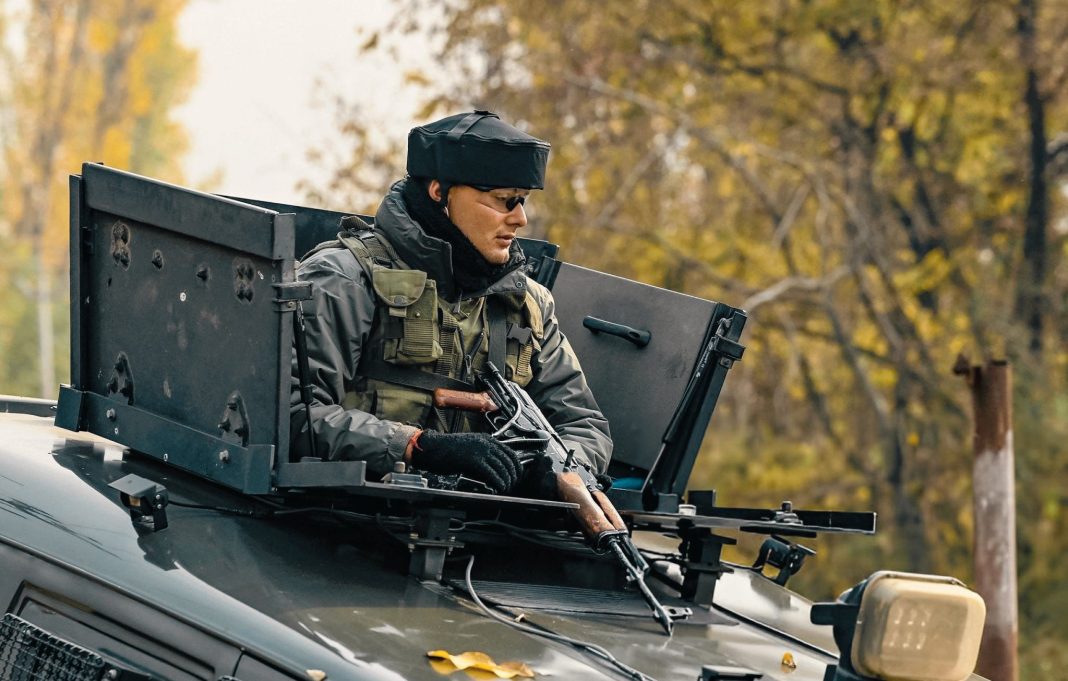The Indian Army’s Quick Reaction Team (QRT) is a specialized unit that plays a crucial role in ensuring the security and defense of the nation. Composed of highly trained and skilled personnel, the QRT is tasked with responding swiftly and effectively to a wide range of emergency situations, from terrorist attacks to natural disasters. Their ability to react quickly and decisively has made them an integral part of the Indian Army’s operational strategy.
The QRT is a highly specialized unit that is trained to handle a variety of complex and challenging scenarios. They are equipped with state-of-the-art weaponry and equipment, and their members undergo rigorous training to ensure that they are prepared for any eventuality. The QRT’s role is to provide a rapid and coordinated response to emergency situations, working closely with other military and law enforcement agencies to ensure the safety and security of the nation.
The role and significance of QRT in the Indian Army
The Quick Reaction Team (QRT) is a crucial component of the Indian Army’s overall operational strategy. Their primary role is to provide a rapid and coordinated response to emergency situations, such as terrorist attacks, hostage situations, and natural disasters. The QRT is trained to respond quickly and efficiently to these types of incidents, with the goal of minimizing casualties and restoring order as quickly as possible.

The QRT’s significance in the Indian Army cannot be overstated. They are often the first responders to emergency situations, and their actions can mean the difference between life and death for civilians and military personnel alike. Their ability to react quickly and decisively, combined with their specialized training and equipment, makes them a valuable asset in the Indian Army’s efforts to maintain national security and defend the country’s borders.
In addition to their emergency response duties, the QRT also plays a key role in conducting counterterrorism operations and providing security for high-profile events and VIPs. They work closely with other military and law enforcement agencies to gather intelligence, plan and execute operations, and ensure the safety of the public and military personnel.
Training and qualifications required for QRT personnel
The personnel who make up the Quick Reaction Team (QRT) of the Indian Army are among the most highly trained and skilled soldiers in the country. To be selected for the QRT, candidates must undergo a rigorous selection process and complete an intensive training program that covers a wide range of skills and capabilities.
The selection process for the QRT is highly competitive, with only the best and most capable soldiers being chosen to join the team. Candidates must demonstrate exceptional physical fitness, mental toughness, and a strong commitment to the mission of the QRT. They must also have a proven track record of success in their previous military roles and a deep understanding of the challenges and threats facing the Indian Army.
Once selected, QRT personnel undergo an extensive training program that covers a wide range of topics, including:
- Weapons and Tactics: QRT members are trained in the use of a variety of weapons, including assault rifles, submachine guns, and sniper rifles. They also receive training in advanced tactical maneuvers, such as close-quarters combat, room clearing, and hostage rescue.
- Counterterrorism Operations: QRT personnel are trained in the latest counterterrorism tactics and techniques, including intelligence gathering, surveillance, and covert operations.
- Emergency Response: QRT members are trained to respond quickly and effectively to a wide range of emergency situations, such as natural disasters, industrial accidents, and terrorist attacks.
- Medical Training: QRT personnel receive advanced medical training, including first aid, trauma care, and evacuation procedures, to ensure that they can provide immediate medical assistance to those in need.
- Language and Cultural Training: QRT members are also trained in various languages and cultural customs, which helps them to communicate effectively with local populations and work seamlessly with other military and law enforcement agencies.
The training and qualifications required for QRT personnel are among the most rigorous in the Indian Army, and only the best and most dedicated soldiers are able to meet the high standards required to join this elite unit.

Equipment and weaponry used by QRT
The Quick Reaction Team (QRT) of the Indian Army is equipped with a wide range of state-of-the-art weapons and equipment to ensure that they are prepared for any eventuality. From advanced assault rifles to specialized communication devices, the QRT’s arsenal is designed to give them a tactical advantage in a variety of operational scenarios.
Some of the key equipment and weaponry used by the QRT includes:
- Assault Rifles: The QRT is equipped with a variety of advanced assault rifles, including the INSAS (Indian Small Arms System) and the AK-47. These weapons are known for their reliability, accuracy, and firepower, making them ideal for close-quarters combat and counterterrorism operations.
- Submachine Guns: The QRT also uses a range of submachine guns, such as the Heckler & Koch MP5 and the Beretta CX4 Storm, which are well-suited for urban warfare and hostage rescue operations.
- Sniper Rifles: The QRT’s sniper teams are equipped with high-precision sniper rifles, such as the Dragunov SVD and the Barrett M82A1, which allow them to engage targets at long range with a high degree of accuracy.
- Protective Equipment: QRT personnel are equipped with a range of protective equipment, including bulletproof vests, helmets, and body armor, to ensure their safety during operations.
- Communication Devices: The QRT is equipped with advanced communication devices, such as secure radios and satellite phones, which allow them to maintain constant communication with their command and control centers during operations.
- Specialized Vehicles: The QRT also has access to a variety of specialized vehicles, including armored personnel carriers and light tactical vehicles, which allow them to rapidly deploy and respond to emergency situations.
The QRT’s equipment and weaponry are constantly being updated and improved to ensure that they remain at the forefront of military technology and are able to effectively respond to the evolving threats facing the Indian Army.

Operations and scenarios where QRT is deployed
The Quick Reaction Team (QRT) of the Indian Army is deployed in a wide range of operational scenarios, from counterterrorism operations to disaster relief efforts. Their ability to respond quickly and effectively to a variety of emergency situations has made them an invaluable asset to the Indian Army.
Some of the key scenarios where the QRT is deployed include:
- Counterterrorism Operations: The QRT is often the first responder to terrorist attacks and hostage situations, working closely with other military and law enforcement agencies to neutralize the threat and rescue any hostages.
- Natural Disaster Response: The QRT is also deployed to provide assistance and support during natural disasters, such as floods, earthquakes, and cyclones. They are trained to conduct search and rescue operations, provide emergency medical care, and help with the distribution of relief supplies.
- VIP Security: The QRT is responsible for providing security for high-profile individuals, such as government officials and visiting dignitaries, ensuring their safety and protection during their stay in the country.
- Border Security: The QRT is also deployed along the Indian borders to provide additional security and support to the regular army units stationed there, helping to deter and respond to any cross-border incursions or attacks.
- Riot Control: In the event of civil unrest or riots, the QRT may be called upon to help maintain law and order, using their specialized training and equipment to disperse crowds and restore peace.
Regardless of the scenario, the QRT is always ready to respond quickly and effectively to any emergency situation that arises. Their ability to adapt to changing circumstances and work seamlessly with other military and law enforcement agencies has made them a vital component of the Indian Army’s overall operational strategy.
Success stories and achievements of QRT in the Indian Army
The Quick Reaction Team (QRT) of the Indian Army has a long and storied history of success and achievement, having played a crucial role in a number of high-profile operations and missions over the years. From counterterrorism operations to disaster relief efforts, the QRT has consistently demonstrated its ability to respond quickly and effectively to a wide range of emergency situations.
One notable success story of the QRT is their role in the 2008 Mumbai attacks. When a group of terrorists launched coordinated attacks across the city, the QRT was one of the first responders on the scene. Working closely with other military and law enforcement agencies, the QRT was able to neutralize the threat and rescue numerous hostages, ultimately helping to bring the situation under control and restore order to the city.
Another example of the QRT’s success is their involvement in the 2016 surgical strikes against Pakistan. When the Indian Army launched a series of cross-border raids in response to a terrorist attack, the QRT played a crucial role in providing support and security for the operation, ensuring that it was carried out with precision and efficiency.
In addition to their work in counterterrorism and military operations, the QRT has also played a vital role in disaster relief efforts. During the 2013 Uttarakhand floods, for example, the QRT was deployed to the affected region to conduct search and rescue operations, provide emergency medical care, and assist with the distribution of relief supplies.
The QRT’s success and achievements have not gone unnoticed, and they have been recognized both within the Indian Army and by the broader public for their dedication, professionalism, and bravery. Many QRT members have been awarded prestigious military honors and decorations for their outstanding service and contributions to the security and defense of the nation.
Challenges faced by QRT in their operations
While the Quick Reaction Team (QRT) of the Indian Army has a long and impressive track record of success, they also face a number of significant challenges in their day-to-day operations. From the unpredictable nature of the threats they face to the logistical and operational challenges of deploying in remote or hostile environments, the QRT must constantly adapt and innovate to ensure that they are able to effectively respond to any emergency situation.
One of the primary challenges faced by the QRT is the constantly evolving nature of the threats they face. Terrorist groups and other adversaries are constantly adapting their tactics and strategies, making it essential for the QRT to stay one step ahead. This requires extensive training and continuous investment in new technologies and equipment to ensure that the QRT is always prepared to respond to the latest threats.
Another major challenge is the logistical and operational challenges of deploying the QRT in remote or hostile environments. Many of the scenarios in which the QRT is deployed, such as border security operations or disaster relief efforts, take place in areas that are difficult to access and lack the necessary infrastructure to support a rapid and effective response. This requires the QRT to be highly adaptable and self-sufficient, with the ability to rapidly deploy and operate in a wide range of conditions.
The QRT also faces significant challenges in terms of coordination and collaboration with other military and law enforcement agencies. Effective emergency response often requires a coordinated and integrated approach, and the QRT must work closely with a variety of other units and agencies to ensure that their operations are seamlessly executed.
Finally, the QRT also faces significant challenges in terms of recruitment and retention. As one of the most elite and specialized units in the Indian Army, the QRT requires highly skilled and experienced personnel, and attracting and retaining the best and brightest soldiers is a constant challenge.
Despite these challenges, the QRT remains a critical component of the Indian Army’s overall operational strategy, and its members continue to demonstrate their dedication, professionalism, and bravery in the face of any and all threats.
Collaboration and coordination with other military units
The Quick Reaction Team (QRT) of the Indian Army does not operate in isolation, but rather works closely with a variety of other military and law enforcement agencies to ensure the security and defense of the nation. This collaboration and coordination is essential to the QRT’s ability to effectively respond to a wide range of emergency situations.
One of the key areas of collaboration for the QRT is with the regular army units stationed along the Indian borders. The QRT works closely with these units to provide additional security and support, helping to deter and respond to any cross-border incursions or attacks. This collaboration allows the QRT to leverage the local knowledge and expertise of the regular army units, while also providing them with the specialized skills and equipment of the QRT.
The QRT also works closely with other specialized military units, such as the National Security Guard (NSG), Rashtriya Rifles and the Para Special Forces, to plan and execute complex counterterrorism operations. This collaboration allows the QRT to draw on the expertise and resources of these other units, ensuring that their operations are carried out with maximum effectiveness and efficiency.
In addition to their work with other military units, the QRT also collaborates extensively with law enforcement agencies, such as the police and intelligence services. This collaboration is essential for gathering intelligence, planning operations, and ensuring a coordinated response to emergency situations.
The QRT’s ability to work seamlessly with these other agencies is a testament to the high level of training and professionalism of its personnel. They are able to quickly adapt to changing circumstances, communicate effectively, and coordinate their actions to ensure the success of their missions.
Overall, the QRT’s collaboration and coordination with other military and law enforcement agencies is a critical component of its overall operational strategy, and it is a key factor in the unit’s continued success and effectiveness.
Future developments and advancements in QRT capabilities
As the threats facing the Indian Army continue to evolve and become more complex, the Quick Reaction Team (QRT) must constantly adapt and innovate to ensure that it remains at the forefront of military technology and capability. To this end, the Indian Army is investing heavily in the development and advancement of the QRT’s capabilities, with a focus on enhancing their ability to respond quickly and effectively to a wide range of emergency situations.
One of the key areas of focus for the future development of the QRT is the integration of new technologies and equipment. This includes the adoption of advanced communication systems, such as secure, encrypted radios and satellite phones, which will allow the QRT to maintain constant communication with their command and control centers during operations.
The QRT is also expected to benefit from the development of new weapons and tactical equipment, such as lightweight, high-powered assault rifles and specialized protective gear. These advancements will help to enhance the QRT’s firepower and survivability, allowing them to more effectively neutralize threats and protect themselves and others during operations.
In addition to these technological advancements, the Indian Army is also investing in the continued training and development of QRT personnel. This includes the expansion of their training programs to cover a wider range of scenarios and the incorporation of new techniques and tactics to address evolving threats.
One area of particular focus for the QRT’s future development is the enhancement of their ability to respond to natural disasters and other humanitarian crises. As climate change and other environmental factors continue to increase the frequency and severity of natural disasters, the QRT will need to be prepared to provide rapid and effective assistance in these types of situations.
Overall, the future of the QRT looks bright, with the Indian Army committed to ensuring that this elite unit remains at the forefront of military capability and continues to play a vital role in the security and defense of the nation.
The crucial role of QRT in ensuring the security and defense of the nation
The Quick Reaction Team (QRT) of the Indian Army is a highly specialized and elite unit that plays a crucial role in ensuring the security and defense of the nation. Through their rapid response capabilities, specialized training, and advanced equipment, the QRT is able to effectively respond to a wide range of emergency situations, from terrorist attacks to natural disasters.
The QRT’s success and achievements over the years have been a testament to the dedication, professionalism, and bravery of its members. Whether they are neutralizing terrorist threats, providing security for high-profile individuals, or assisting in disaster relief efforts, the QRT has consistently demonstrated its ability to adapt to changing circumstances and work seamlessly with other military and law enforcement agencies.
Despite the significant challenges they face, the QRT remains a critical component of the Indian Army’s overall operational strategy. As the threats facing the nation continue to evolve, the QRT will need to continue to innovate and adapt, investing in new technologies and techniques to ensure that they are always prepared to respond to any emergency situation.





